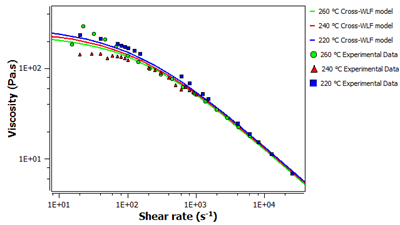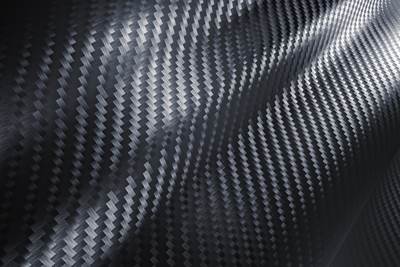NC State University study kick-starts carbon fiber production process
Addition of chemical additives, glucaric acid and mucic acid, into precursor PAN material decreased energy requirements for conversion into carbon fiber five-fold.

Researchers work on making carbon fiber more efficiently. Photo Credit: Debjyoti Banerjee.
In a new study reported in the Journal of Applied Polymer Science, North Carolina (NC) State University (Raleigh, N.C., U.S.) researchers have found a way to improve the energy efficiency of part of the process for making carbon fiber.
Under this study, results were reported from an experiment where they added two biologically derived chemicals found in certain fruits into a precursor material for carbon fiber. They found that with the addition of the two chemicals, starting the chemical conversion process of making carbon fiber required less energy. The chemicals are sugar acids called glucaric acid and mucic acid.
“There is an increasing demand for carbon fiber, and when it comes to low-cost fiber, one of the leading applications is for use as a structural material in vehicles,” says Ericka Ford, assistant professor of textile engineering, chemistry and science at NC State. “In this study, we found that by adding the two chemicals into the precursor material, we can potentially reduce the amount of energy required to complete one stage of the manufacturing process for carbon fiber, and help bring down some of the cost.”
Before using the lab chemicals, researchers turned to computer modeling to get a preview of what would happen when they added the two chemical compounds to the precursor material. Their interest in the chemicals was initially piqued after one of them, glucaric acid, was listed by the U.S. Department of Energy (DOE) as a chemical of industrial significance.
“We were interested in understanding how these chemicals would interact with the precursor material, so using computer models and simulations we were able to look at their interaction parameters before we even started lab work,” adds study co-author Hannah Dedmon, an NC State graduate student. “We’re able to slow things down and zero in to look at atomic-level details, which we are blind to in the lab.”
From there, they experimentally tested making the precursor material — polyacrylonitrile (PAN). First, a gel-like material that has a consistency similar to honey was produced, then pushed through a tiny needle to transform into a very fine filament. Next, the PAN filaments were heated to very high temperatures, eventually converting into a structure that forms the basis of carbon fiber.
Addition of the chemical additives reportedly decreased the energy required to start the chemical process of making the carbon structure from PAN five-fold. Researchers say that could also reduce the overall cost of that step of the manufacturing process by making the reaction faster.
“These are small molecules with functional groups that are capable of starting the reaction much more efficiently than if it hadn’t been in the fiber,” says the study’s lead author Debjyoti Banerjee, doctoral candidate at NC State.
Next, researchers plan to look at other additives, as well as possible use computer models to predict which ones might get the most bang for their buck. “We are interested in looking at other natural products that we could add to PAN fibers and influence their usefulness for conversion into carbon fiber,” Ford adds.
The study, “Cyclization kinetics of gel-spun polyacrylonitrile aldaric-acid sugars using the isoconversional approach,” was authored by Banerjee, Dedmon, Ford, Farzin Rahmani and Melissa A. Pasquinelli. It was funded by the NC State Chancellor’s Innovation Fund.
Related Content
Manufacturing the MFFD thermoplastic composite fuselage
Demonstrator’s upper, lower shells and assembly prove materials and new processes for lighter, cheaper and more sustainable high-rate future aircraft.
Read MorePlant tour: Joby Aviation, Marina, Calif., U.S.
As the advanced air mobility market begins to take shape, market leader Joby Aviation works to industrialize composites manufacturing for its first-generation, composites-intensive, all-electric air taxi.
Read MoreBio-based acrylonitrile for carbon fiber manufacture
The quest for a sustainable source of acrylonitrile for carbon fiber manufacture has made the leap from the lab to the market.
Read MorePEEK vs. PEKK vs. PAEK and continuous compression molding
Suppliers of thermoplastics and carbon fiber chime in regarding PEEK vs. PEKK, and now PAEK, as well as in-situ consolidation — the supply chain for thermoplastic tape composites continues to evolve.
Read MoreRead Next
Thermoplastic tapes reinforced with textile-based PAN carbon fiber
IACMI project trials inline production of thermoplastic tapes reinforced with textile-based PAN carbon fiber.
Read MoreMAE Spa receives funding to build PAN precursor plants in China
New financial support enables the company to complete order for design and construction of new carbon fiber precursor production facilities.
Read MoreAll-recycled, needle-punched nonwoven CFRP slashes carbon footprint of Formula 2 seat
Dallara and Tenowo collaborate to produce a race-ready Formula 2 seat using recycled carbon fiber, reducing CO2 emissions by 97.5% compared to virgin materials.
Read More














.jpg;maxWidth=300;quality=90)











